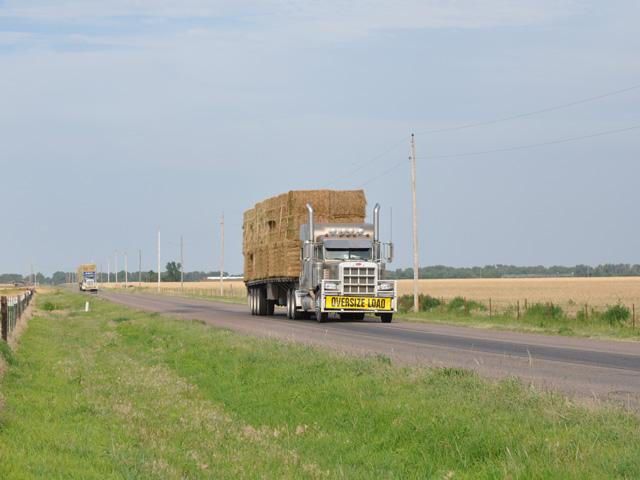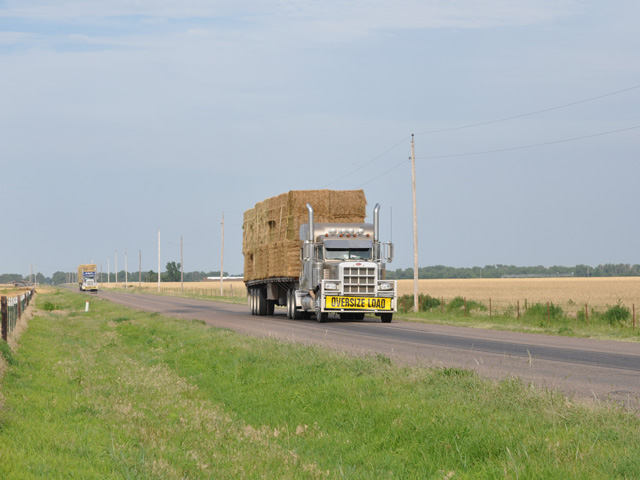Ag Policy Blog
ELAP On-Line Tool for Drought Aid; USDA to Check Soil Carbon in CRP Land
USDA on Wednesday rolled out an online tool to help ranchers document and estimate payments to cover feed transportation costs caused by drought, which are now covered by the Emergency Assistance for Livestock, Honeybees and Farm-raised Fish Program (ELAP).
The U.S. Department of Agriculture (USDA) updated the program this year to include feed transportation costs as well as lowered the threshold for when assistance for water hauling expenses is available. USDA's Farm Service Agency (FSA) will begin taking applications this fall.
"Drought has had a tremendous impact on producers, and we are thinking outside the box to help producers mitigate the effects of drought, which is a necessary first step to realizing the Secretary's vision of ensuring agricultural producers get a fair share of the food dollar," said FSA Administrator Zach Ducheneaux. "From climate change to COVID-19, we are continuously working to make our programs as flexible as possible and so they effectively help producers face today's challenges."
The new ELAP Feed Transportation Producer Tool is a Microsoft Excel workbook that enables ranchers to input information specific to their operation to determine an estimated payment. Final payments may vary depending on eligibility.
To use the tool, ranchers will need:
- Number of truckloads for this year.
- Mileage per truckload this year.
- Share of feed cost this year (if splitting loads).
- Number of truckloads you normally haul.
- Normal mileage per truckload.
- Share of normal feed cost
The tool calculates the estimated payment for feed transportation assistance, but it is not an application. Once FSA begins accepting applications later this fall for feed transportation assistance, ranchers should contact their FSA county office to apply. To simplify the application process, ranchers can print or email payment estimates generated by this tool for submission to FSA. The deadline to apply for ELAP, including feed transportation costs, for 2021 is Jan. 31, 2022.
P[L1] D[0x0] M[300x250] OOP[F] ADUNIT[] T[]
The tool requires Microsoft Excel, and a tutorial video is available at https://www.fsa.usda.gov/…
ELAP provides financial assistance to eligible producers of livestock, honeybees and farm-raised fish for losses due to disease, certain adverse weather events or loss conditions as determined by the Secretary of Agriculture. ELAP now covers feed transportation costs where grazing and hay resources have been depleted. This includes places where:
Drought intensity is D2 for eight consecutive weeks as indicated by the U.S. Drought Monitor; or
Drought intensity is D3 or greater.
USDA will reimburse eligible ranchers 60% of feed transportation costs above what would have been incurred in a normal year. Producers qualifying as underserved (socially disadvantaged, limited resource, beginning or military veteran) will be reimbursed for 90% of the feed transportation cost above what would have been incurred in a normal year.
USDA uses a national cost formula to determine reimbursement costs that will not include the first 25 miles and distances exceeding 1,000 transportation miles. The calculation will also exclude the normal cost to transport hay or feed if the producer normally purchases some feed.?For 2021, the initial cost formula of $6.60 per mile will be used (before the percentage is applied).
SOIL CARBON MONITORING FOR CRP GROUND
USDA also announced the department is investing?$10?million?in?a new initiative to sample, measure, and monitor soil carbon on Conservation Reserve Program (CRP) acres to better quantify the climate outcomes of the program.
USDA stated CRP is an important tool in the Nation's fight to reduce the worst impacts of climate change facing our farmers, ranchers, and foresters. This initiative will begin implementation in fall 2021 with three partners. The announcement is part of a broader, long-term soil carbon monitoring effort across agricultural lands that supports USDA's commitment to deliver climate solutions to agricultural producers and rural America through voluntary, incentive-based solutions.
"These?CRP Climate Change Mitigation Assessment Initiative?projects will?survey, sample and measure the climate benefits of land enrolled in CRP conservation?practice types over time," Ducheneaux said. "This?data?will help USDA?better target CRP?practices?to achieve continued climate wins across environmentally sensitive lands while strengthening our modeling and conservation planning resources for all producers."??
These models include?the Daily Century Model, or?DayCent, which simulates the movement of carbon and nitrogen through agricultural systems and informs the?National Greenhouse Gas Inventory. https://www.epa.gov/…
Data will also be used to strengthen the?COMET-Farm? https://comet-farm.com/… and?COMET-Planner?tools, which enable producers to evaluate potential carbon sequestration and greenhouse gas emission reductions based on specific management scenarios.?
USDA partners will conduct soil carbon sampling on three categories of CRP practice types: perennial grass, trees, and wetlands.
Perennial grasses: In consultation with USDA, Michigan State University will sample and measure soil carbon and bulk density of CRP grasslands (including native grass plantings, rangelands, and pollinator habitat plantings) at an estimated 600 sites across the U.S. with a focus in the central states during this five-year project. This information will be used to model and compare the climate benefits of CRP. Partners include the University of Wisconsin-Madison, the University of Arkansas at Pine Bluff, Deveron, an agriculture technology company, and Woods End Laboratories.
Trees: Mississippi State University will partner with Alabama A&M University to collect above and below ground data at 162 sites across seven states documenting CRP-related benefits to soil and atmospheric carbon levels. Information will help further calibrate the DayCent model. This five-year project will focus within the Mississippi Delta and Southeast states.
Wetlands: Ducks Unlimited and its partners will collect data on carbon stocks in wetland soils as well as vegetation carbon levels at 250 wetland sites across a 15-state area in the central U.S. Data will support the DayCent and additional modeling. Partners for this five-year project include: Migratory Bird Joint Venture, Intertribal Research and Resource Center at United Tribes Technical College, Clemson University, Kenyon College, Lincoln University, Pennsylvania State University, the University of Missouri, and the University of Texas at Austin.
These three Climate Change Mitigation Assessment Initiative projects are funded through FSA's program to work with partners to identify?Monitoring, Assessment and Evaluation (MAE)?projects to quantify CRP environmental benefits to water quality and quantity, wildlife, and rural economies.
Applications for projects?were welcome from all organizations, including public,?private,?nonprofit institutions, and educational institutions?including?historically Black colleges and universities, Tribal colleges and universities and Hispanic-serving institutions or organizations.?
?
Chris Clayton can be reached at Chris.Clayton@dtn.com
Follow him on Twitter @ChrisClaytonDTN
(c) Copyright 2021 DTN, LLC. All rights reserved.






Comments
To comment, please Log In or Join our Community .